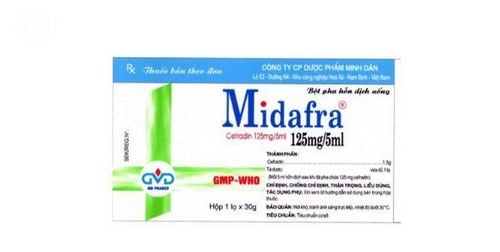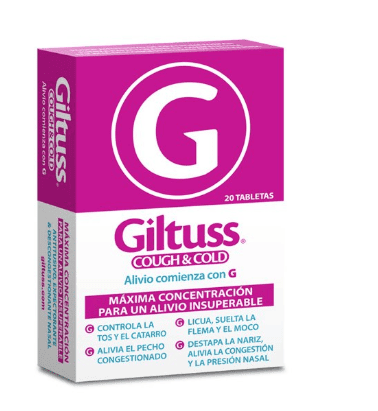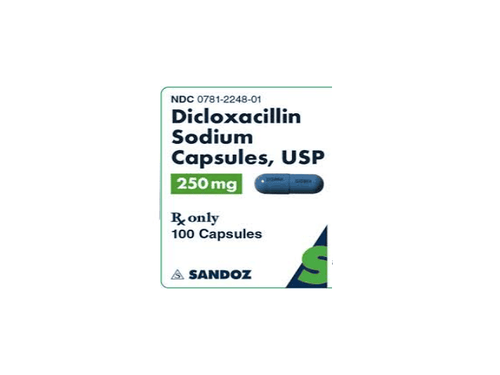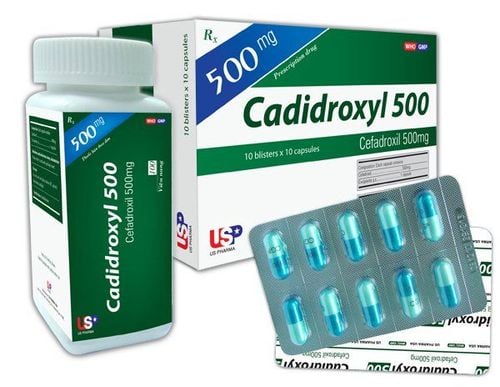This is an automatically translated article.
Cadifradin has the main ingredient is Cefradin 500mg, prepared in the form of hard capsules. The drug is used in the treatment of respiratory, ENT, urinary, skin and soft tissue infections, gonorrhea, etc.
1. What is Cadifradine?
The drug Cadifradin is prepared in the form of dark yellow hard folliculitis, the main ingredient is Cefradin 500 mg. The drug is indicated in the treatment of:
Respiratory tract infections: Lobar pneumonia, bronchitis, bronchiectasis with superinfection Ear, nose and throat infections: otitis media, mastoiditis, sinusitis, inflammation tonsillitis , pharyngitis Urinary tract infection: cystitis and prostatitis, pyelonephritis, urethritis, prophylaxis of recurrent urinary tract infections Skin, soft tissue and bone infections: Abscess/inflammation/acne skin boils/impetigo, bone infections Obstetric-gynecological infections Treatment of gonorrhea when penicillin is no longer suitable Prophylaxis of penicillin in patients with heart disease requiring dental treatment Cadifradin 500 is contraindicated in people with allergies with Cefradine, a cephalosporin antibiotic, or with penicillin-induced anaphylaxis.
2. Dosage - How to use
Cadifradin 500 is administered orally. The duration of treatment with Cadifradin 500 usually lasts from 7-14 days, the maximum recommended dose is 6g/day for adults and 4g/day for children.
With skin and skin structure infections, respiratory tract infections (except lobar pneumonia), uncomplicated urinary tract infections: 500mg/times, 2 times/day For severe urinary tract infections (including both prostatitis) and lobar pneumonia: 500 mg/time, 4 times/day or 1 g/time, 2 times/day. For gonorrhea, use a single dose of 3g, a combination of 1g of Probenecid for men or a dose of 2g of a combination of 0.5g of Probenecid for women Children > 9 months of age: Use a dose of 25-60 mg/kg/day, divided into 2-3 doses. Kidneys treated with Cadifradine require dose reduction according to ClCr. Dosage of Cadifradin 500 should be followed the instructions on the package, the drug leaflet or the instructions of the doctor, pharmacist, do not arbitrarily calculate, apply or change the dose.
If a dose of Cadifradine is missed, take it as soon as possible, usually 1-2 hours after the scheduled time. However, if it is almost time for your next dose, skip the missed dose and take your next dose at the regular time, do not double the dose.
If there are abnormal symptoms after taking an overdose of the prescribed drug, it is necessary to notify the doctor for timely treatment. If you are being treated at home, you need to bring your medical examination book, prescription / bottle of medicine that you have been using to support a faster diagnosis.
3. Side effects
Possible side effects during treatment with Cadifradin include:
Common: Gastrointestinal disturbances including diarrhea, nausea. Uncommon: Eosinophilia, rash, urticaria, pruritus, reversible hepatic transaminase elevations, vitamin K and B deficiency. Rare: Headache, dizziness, anaphylactic reactions, fatigue, leukopenia neutropenia, thrombocytopenia, abdominal pain, pseudomembranous colitis.
4. Caution
Some things to note before using Cadifradin include:
Be careful when using the drug for people with severe kidney failure, the elderly, and the exhausted. The maximum recommended dose should be reduced in patients whose renal function has decreased to less than half of normal, and renal function should be assessed before and during use to adjust the dose accordingly. There are no studies on fetal toxicity and teratogenicity when taking Cadifradine, so it should be used with caution in pregnant women. The concentration of Cadifradin 500 in breast milk is very low, however, it is still necessary to consider stopping breastfeeding before taking the drug. The drug can cause dizziness, headache, so it should not be used while driving or operating machinery.
5. Drug interactions
Drug interactions encountered when taking Cadifradine with other drugs include:
Using Cadifradin 500 in combination with strong diuretics such as furosemide, ethacrynic acid, piretanide may increase nephrotoxicity. Using Cadifradin 500 in combination with Probenecid slows down the elimination and prolongs the effects of cefradine.
Please dial HOTLINE for more information or register for an appointment HERE. Download MyVinmec app to make appointments faster and to manage your bookings easily.













